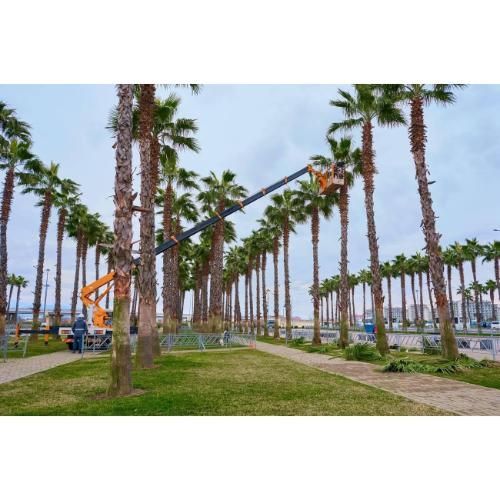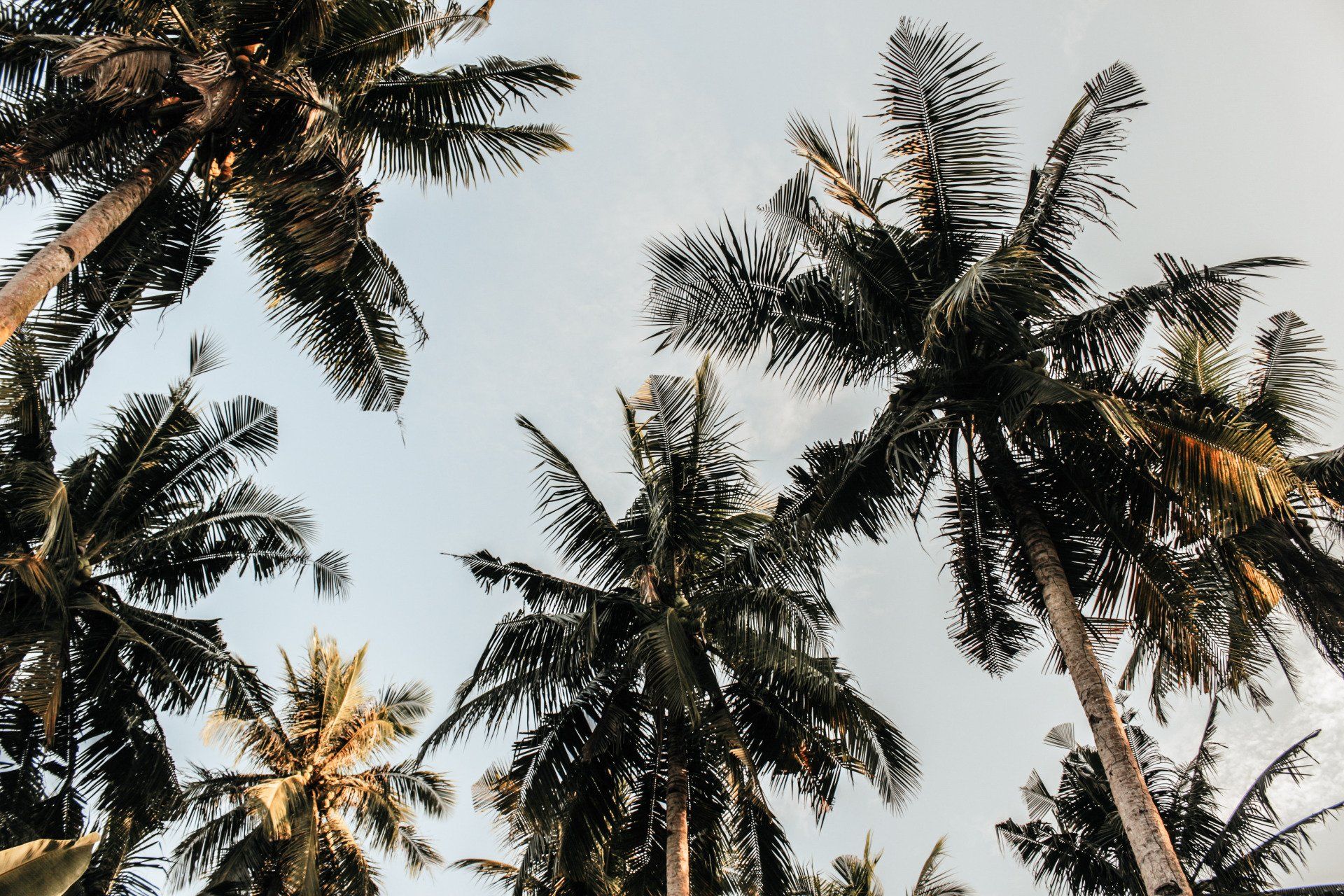How to Skin a Palm Tree
Professional Step-by-Step Guide from Palm Tree LA Experts

Palm tree skinning is a crucial maintenance task that keeps your palms looking pristine and healthy. Skinning involves carefully removing dead frond bases, loose petioles, and accumulated debris from the trunk to reveal a clean, smooth surface that enhances the tree's natural beauty and prevents pest infestations. Professional palm tree maintenance ensures your trees remain strong and attractive throughout the year.
Safety and proper technique are essential when skinning palm trees. The process requires specific tools and expertise to avoid damaging the living tissue while removing the dead material. Many property owners in Los Angeles trust certified arborists to handle this delicate task, as improper skinning can harm the palm's health and structural integrity.
Key Takeaways
- Proper palm skinning removes dead material and prevents pest problems
- Professional tools and safety equipment are essential for successful skinning
- Regular maintenance keeps palms healthy and enhances property aesthetics
What Is Palm Tree Skinning?
Palm tree skinning involves removing dead leaf bases, known as boots, from the trunk to reveal a clean, smooth surface. This essential maintenance task improves appearance and reduces pest habitats.
Differences Between Skinning and Pruning
Palm tree pruning focuses on removing dead, dying, or damaged fronds from the crown of the palm. Skinning specifically targets the trunk.
When you prune, you work on the top portion of the palm tree to maintain its shape and health. The process removes yellow or brown fronds, seed pods, and flower stalks.
Skinning requires careful peeling of the dead leaf bases that naturally accumulate on the trunk. Professional arborists use specialized tools to remove these boots without damaging the living trunk tissue.
Why Skin a Palm Tree Trunk?
Professional palm skinning eliminates potential hiding spots for rats, scorpions, and other unwanted pests that can damage your property.
The smooth, clean appearance of a skinned palm adds significant curb appeal and can increase property value. It creates a polished, resort-style look many homeowners desire.
Removing dead leaf bases also reduces fire hazards, as these dry materials can easily catch fire during hot weather or from nearby sparks.
Regular skinning makes future maintenance easier and helps you spot potential health issues or trunk damage early.
Preparation: Tools and Safety Tips
Proper equipment and safety measures are essential when skinning palm trees to protect yourself and ensure professional results.
Essential Tools You'll Need
A sturdy extension ladder tall enough to safely reach the palm crown is crucial. You'll need specialized palm tree trimming tools including a sharp machete or pruning saw for cutting fronds.
A rope system with proper tree rigging equipment helps control removed sections and prevents dangerous falls.
High-quality pruning shears handle smaller fronds and petioles efficiently. Keep tools sharp and well-maintained to make clean cuts.
Protective Gear and Precautions
Safety equipment is non-negotiable when skinning palms. Wear a safety harness attached to a secure anchor point when working at height.
Put on heavy-duty work gloves to protect against sharp fronds and tools. Safety glasses shield your eyes from falling debris and dust.
A hard hat is essential to guard against falling palm materials. Wear steel-toed boots with good traction for stability on ladders.
Check weather conditions before starting - avoid working in high winds or rain. Never work alone; have a spotter on the ground for safety.
Step-By-Step Guide: How to Skin a Palm Tree
Proper palm tree skinning requires careful preparation, the right techniques, and attention to safety measures. Following these steps will help maintain your palm's health while achieving a clean, professional look.
Assessing Your Palm Tree Before Skinning
Start by examining your palm tree's overall condition. Check for signs of disease, pest infestation, or structural issues that could affect the skinning process.
Make sure the palm is mature enough for skinning - the trunk should be at least 15-20 feet tall with established fronds at the top.
Inspect the tree's health and ensure there are no electrical lines or obstacles nearby that could interfere with the work.
Gather your essential tools:
- Heavy-duty gloves
- Sharp machete or specialized palm knife
- Safety goggles
- Hard hat
- Sturdy ladder or lift equipment
How to Skin a Palm Tree by Hand
Begin the skinning process by removing dead fronds and loose material at the top of the trunk.
Position your ladder securely against the trunk, ensuring it's stable and at a safe angle.
Start at the top and work your way down, using your knife to peel away the loose fibers. Cut downward at a 45-degree angle to maintain consistency.
Remove sections in small, manageable pieces rather than trying to strip large areas at once.
Keep your cuts shallow to avoid damaging the trunk's core structure.
Tips for First-Time Homeowners
Always wear protective equipment, including thick gloves and eye protection. Palm fibers can be sharp and cause serious injury.
Start with smaller, more manageable palms for your first skinning attempt.
Work during cooler morning hours to avoid heat exhaustion and ensure better visibility.
Consider marking your cutting lines with chalk to maintain an even appearance around the trunk.
If you're unsure about any step, pause and reassess. It's better to take your time than risk damaging your palm tree.
Professional help is recommended if your palm is over 20 feet tall or near structures.
Timing and Frequency for Palm Tree Maintenance
Proper timing makes palm tree skinning more effective and helps maintain tree health. Regular maintenance prevents potential hazards and keeps your palm trees looking their best.
How Often Should You Skin a Palm Tree?
Palm tree maintenance should occur once or twice per year. Skinning frequency depends on your palm's growth rate and environmental conditions.
Watch for these signs that indicate your palm needs skinning:
- Accumulated dead fronds
- Visible peeling bark
- Dense growth around the trunk
- Loose or hanging palm skirts
Professional skinning removes dead fronds and loose bark while preserving the tree's natural appearance. Your palm's trunk should maintain a clean, smooth surface between maintenance sessions.
Seasonal Considerations in Los Angeles
Los Angeles's mild climate allows palm skinning throughout most of the year. Spring and early summer provide ideal conditions for maintenance work.
Avoid extensive pruning during hurricane season. Maintain a 9-to-3 or 10-to-2 frond pattern to protect the tree during strong winds.
Schedule skinning during dry periods to reduce the risk of fungal infections. Early morning hours offer the best working conditions in LA's warm climate.
In winter months, reduce maintenance activities to protect the palm from cold stress. December through February requires only essential dead frond removal.
Professional Palm Tree Skinning Services in Los Angeles
Professional palm tree skinning requires specialized equipment and expertise to safely remove dead fronds and excess growth while protecting the tree's health.
Benefits of Hiring Specialists
Dead palm fronds and loose petiole bases can create hazardous conditions around your property. Professional skinning removes these dangers and improves your palm's appearance.
Skilled technicians use proper techniques to avoid damaging the trunk while removing built-up debris and old frond bases. This prevents moisture accumulation that could lead to fungal growth or pest infestations.
Regular skinning by experts helps maintain optimal tree health by allowing better airflow and reducing hiding spots for harmful insects. Proper maintenance also increases property value through enhanced curb appeal.
Why Choose Palm Tree LA for Your Palm Tree Maintenance?
Our certified arborists have extensive experience with all palm species common to Southern California. We use industry-leading equipment and safety protocols to ensure quality results.
Our skilled team provides comprehensive evaluations before beginning any skinning work to develop the best approach for your specific palm trees.
We offer flexible scheduling and competitive pricing while maintaining the highest standards of workmanship. Our technicians clean up thoroughly after every job, leaving your property pristine.
Emergency services are available when you need immediate attention for potentially hazardous situations with your palm trees.



